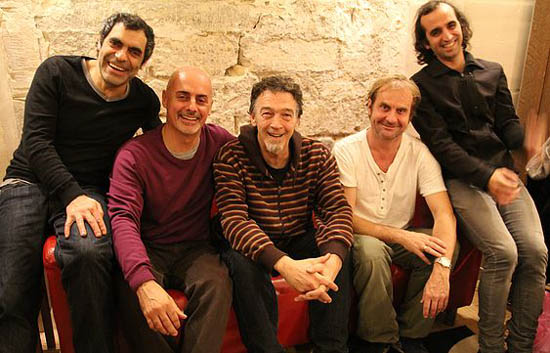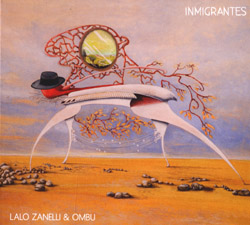|
Lalo Zanelli & Ombu - Inmigrantes
|
|

Lalo Zanelli & Ombu
The more memorable songs accomplish more with less. “Inmigrantes” stands out not only because it's more distinct, cohesive, and steady than most other songs on the album. It also blends and sways like one would expect of Zenlli's self-described journey through “rock, jazz, Latin music, tango, and Argentine folklore,” at least as much a timeless mood in its own right as it is a derivative of any genre. “Tres Rosas,” a much softer, slower, and simpler tune, maintains the same sort of non-manufactured, unified consistency, with a soul that's easy to grasp and hard to forget.
In other songs, bright gems get lost in murky waters. “Vamos” begins with an optimistic, marching piano. 15 seconds in, a rambling avant-garde saxophone- bandoneon duet turns an easy listen into a chore. The song doesn't come into its own until the clutter is ditched for a cooler, more unified ragtime-bop cum bass solo.
“Lo Que Sea” starts as what sounds like an alternate theme song for a 1980's whodunit TV series, only finding distinction when it strays off course, building around recurring guitar solos whose “too cool to be this right” mood should have made for the song's heart. Of the five remaining songs on the album “Papillon” and “Huija” are the most universally palatable. Both keep things afloat by avoiding the temptation to do too much. “Papillon” in particular balances baring soul through song while still managing to serve the masses. Judging this work as good or bad partly seems beside the point. Even within the confines of jazz and tango, it's an album more about artistic ambition than mass consumption. If you find yourself as drawn to Inmigrantes for its intentions as you do turned off by its peculiarities, give a listen to Memoria Colectiva, the group's 2011 release. It has all the flair of their latest album, but fewer of the complicated diversions. When you come back you'll have a greater appreciation for what Inmigrantes has to offer. - Nokware Knight
© 2016 RootsWorld. No reproduction of any part of this page or its associated files is permitted without express written permission.
|

|
|
|